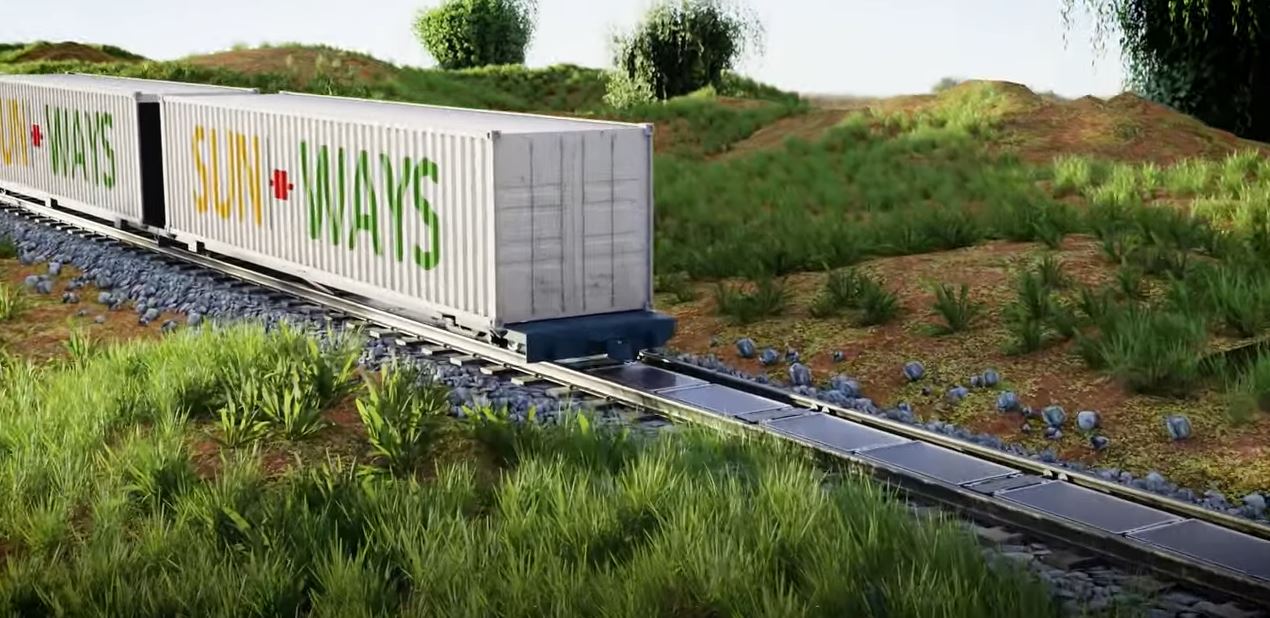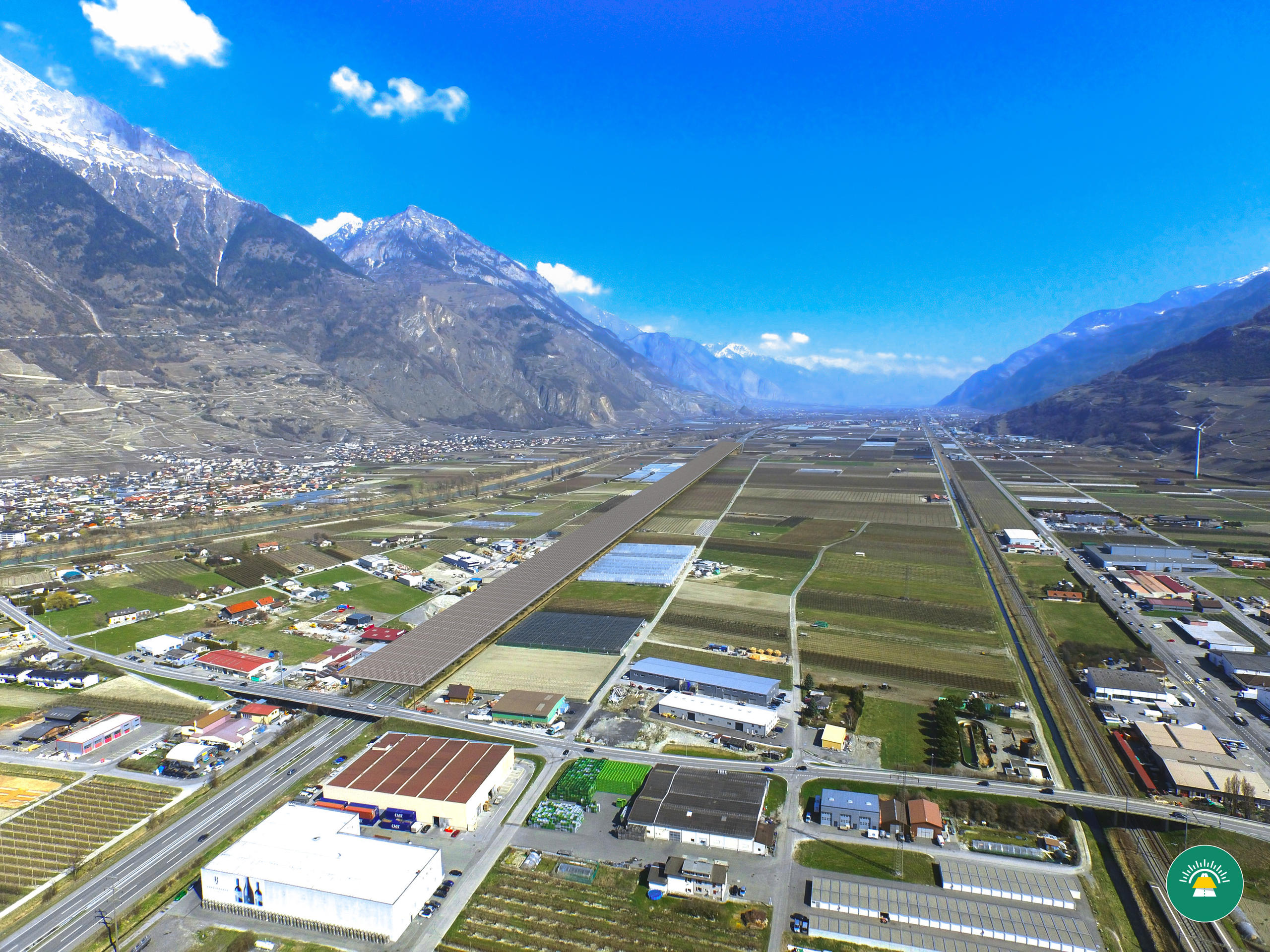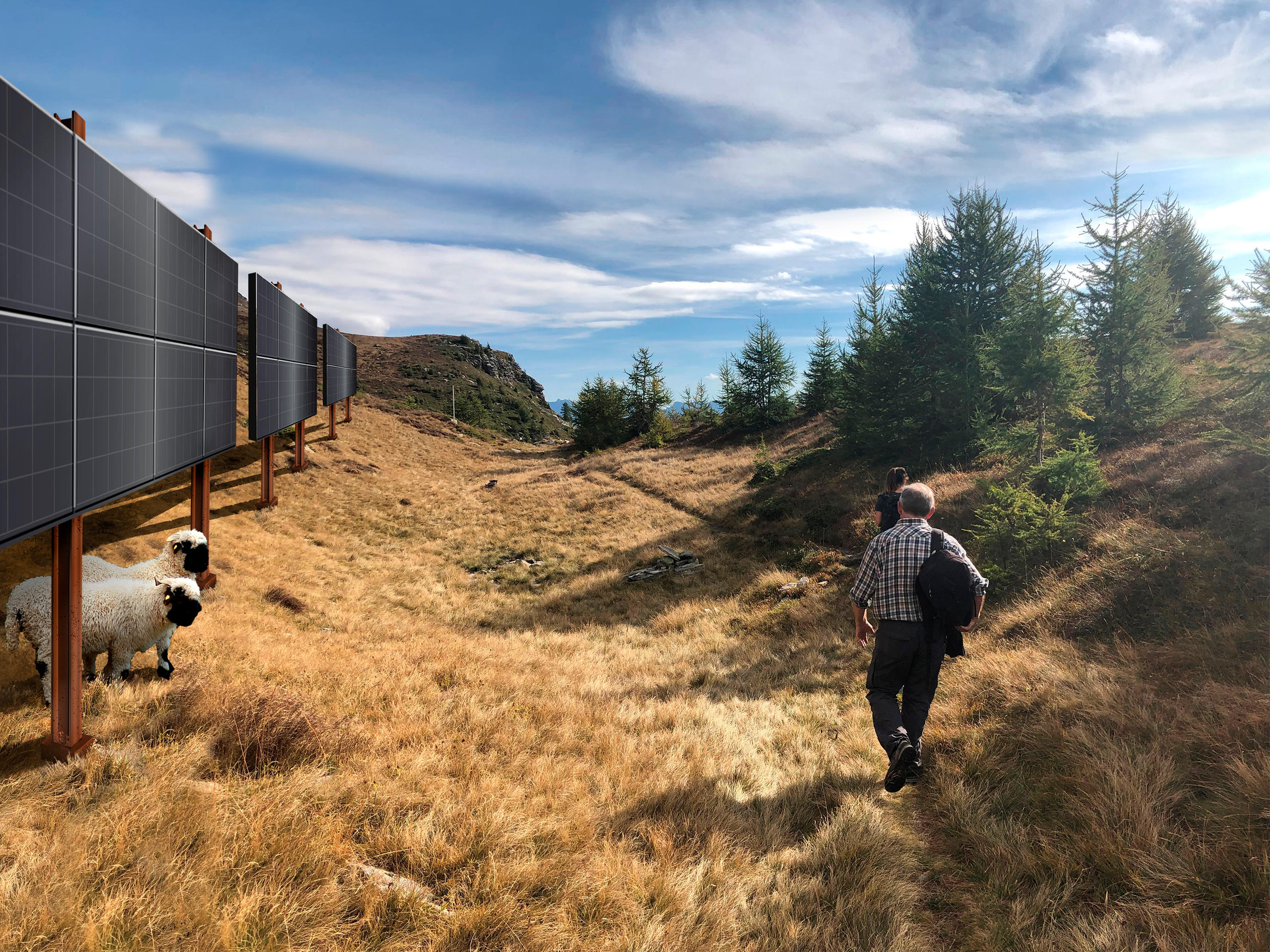
Power-generating railway tracks are coming down the line

Swiss start-up Sun-Ways has developed a mechanical system to install removable solar panels along railway tracks. Its creators say the innovation could be adopted on half of the world’s railway lines. But there is no shortage of challenges.
Solar energy seems to have no boundaries. Solar panels can be found on many previously unused surfaces, from the roofs of houses and noise barriers along highways to the walls of dams and even bodies of water.
Sun-Ways, a small start-up based in the Western Swiss town of Ecublens, has found yet another option. The space between the rails of railway tracks is large enough to place standard-sized solar panels without obstructing the movement of trains, says co-founder Baptiste Danichert. “This way we could produce some of the electricity we need,” he says.
By “we” he means Switzerland, which, like other countries, is banking on renewable energy sources to make the transition to an emissions-free society. However, the scarcity of space available makes it difficult to build large installations. In addition, strict regulations on environmental protection and cultural heritage sometimes hinder the installation of solar panels on private buildings, infrastructure and mountaintops.
“Solar panels between rails, on the other hand, have no visual or environmental impact,” says Danichert.
How does it work?
Sun-Ways uses solar panels made in Switzerland and pre-assembled in the factory. The one-metre-wide panels can be easily placed between rail tracks and attached to the rails using a piston mechanism.
Installation is done mechanically by a train developed by Swiss track maintenance company Scheuchzer. As it moves forward, the train lays the photovoltaic panels along the railway track “like an unrolling carpet”, says Sun-Ways.
The idea of installing solar panels along railway tracks is not new. Two other companies, Italy’s Greenrail and England’s Bankset Energy, are testing photovoltaic elements installed on railway sleepers. However, Sun-Ways is the first to have patented a removable system, in collaboration with EPFL, the Swiss federal technology institute in Lausanne.
“That is the innovation,” says Danichert. Indeed, the possibility of removing the panels is essential for maintenance work, such as rail grinding, to be carried out. Rail grinding ensures that trains continue to run smoothly along the tracks.
Hundreds of thousands of kilometres of panels
The electricity produced would be fed into the power grid and used to supply households. Using the energy for rail operations, on the other hand, is more complicated and would required different technology, Danichert explains.
Theoretically, solar panels could be installed on all 5,317 kilometres of the Swiss rail network for a total area corresponding to about 760 football fields, excluding areas in tunnels or ones exposed to little sunshine.
Sun-Ways says the national rail network could produce 1 Terawatt-hour (TWh) of solar energy per year, or about 2% of the electricity consumed in Switzerland.
The start-up’s goal is not limited to the Alpine country. In the coming years, Sun-Ways plans to expand into other parts of Europe, including neighbouring Germany, Austria and Italy, as well as the United States and Asia. “There are over a million kilometres of railway lines in the world,” says Danichert. “We believe that 50% of the world’s railways could be equipped with our system.”
Many construction companies also have railway lines on their work sites. “Some have already notified us of their interest in covering part of their electricity needs,” he says.

More
Can solar panels on highways accelerate the supply of green energy?
First removable panels in May
Sun-Ways can count on the support of a dozen partner companies and the Swiss Innovation Promotion Agency. If the start-up gets approval from the Federal Office of Transport, it will launch the world’s first removable solar power installation in May.
The pilot project will cover a section of the public railway network near Buttes train station in Western Switzerland. The investment will amount to about CHF400,000 ($437,240).
“The biggest challenge is not technological,” Danichert says. “What is needed is a change of mentality in the railway sector, an area that’s usually not very open to innovation.”
The International Union of Railways tells SWI swissinfo.ch that the Sun-Ways project seems “interesting,” at least on paper. It argues, however, that panels between the rails could pose some problems. These include the likely occurrence of micro-cracks on the panels, a higher risk of fires in the green areas beside the railway tracks, and additional noise due to reflection of the hard surface on the ballast (which also has the function of absorbing noise). Light reflection from the panels could also become a serious problem for train drivers.
Sun-Ways, however, points out that its panels are more resistant than conventional ones, and that the black colour and the use of an anti-reflection filter would reduce the risk for train drivers. Built-in sensors ensure that the panels function properly, and circular brushes mounted at the end of the trains would remove residual dirt that has accumulated on the surface of the panels, such as dust or fragments of the railway ballast. For regions with heavy snowfall or low temperatures, the start-up plans to develop a system to melt snow and ice.
Focusing on photovoltaic
Evelina Trutnevyte, head of the group dedicated to renewable energy systems at the University of Geneva, says that building photovoltaic panels on railways is in theory “a good idea”. “Several studies on scenarios in Switzerland show that photovoltaics is the key technology to achieve the goal of phasing out nuclear power and achieving a net-zero emission balance,” she writes in an email. The Federal Office of Energy estimates that photovoltaic systems could cover about 20% of current electricity demand in Switzerland by 2050 (the share is currently just above 5%).
Since solar panels can be built relatively quickly compared to other technologies, Trutnevyte says they are especially useful in the ongoing energy security crisis due to the war in Ukraine. In addition, thanks to solar panels on roofs or infrastructure, she says it would no longer be necessary to build solar parks on the ground, such as in the Alps, as some projects envisage.
“We do not claim to provide the solution to the global energy supply problem,” says Danichert. “We do, however, want to make a contribution.”
Edited by Sabrina Weiss

More
Mountaintop solar farms spark tensions in Switzerland

In compliance with the JTI standards
More: SWI swissinfo.ch certified by the Journalism Trust Initiative






























Join the conversation!